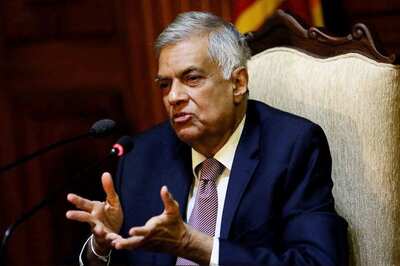
views
New Delhi: In response to the acute shortage of water looming large over most parts of India, the Narendra Modi government has decided to conduct third party evaluations in order to provide central funds to the most needy states.
Sources in the ministry of Jal Shakti told News 18 that there are four states on which deliberations are ongoing. “Tamil Nadu, Rajasthan, Uttar Pradesh and Chhattisgarh may get funds. However, the final names will only be out after the third party report,” said an official in the ministry on condition of anonymity.
Officials in the ministry also informed that Prime Minister Narendra Modi has given a deadline of two years to UP chief minister Yogi Adityanath and Union Jal Shakti Minister Gajendra Singh Shekhawat to solve the water supply related issues in the state.
For the same purpose, the Centre is likely to provide Rs 9,000 crore to Uttar Pradesh, including water-starved regions of Vindhyachal and Bundelkhand.
Tamil Nadu, on the other hand, has sought Rs 5,398-crore assistance from the Centre for water supply projects across the state, in the backdrop of severe water shortage, especially in Chennai.
SP Velumani, state minister for Municipal Administration, Rural Development and Implementation of Special Programme, presented a memorandum last week to Gajendra Singh Shekhawat seeking financial assistance.
The projects include desalination plant and connected pipeline works with a designed capacity of 100 million litres per day (MLD) to Villupuram and Thindivanam municipality; Marakkanam and Vikkaravandi town panchayats and 1,601 rural habitations in 10 panchayat unions of Villupuram district. The total project cost is around Rs 2,000 crore and is expected to benefit 16.78 lakh people.
In 2016, Tamil Nadu faced an unprecedented drought situation. Subsequently, in 2017, the state had received deficit rainfall and in 2018 there was a 24 per cent deficit in rainfall. Highlighting the drought situation in the state, the memorandum said the state government had notified and declared 17 districts and 38 blocks in seven districts having deficit annual rainfall and facing severe drought conditions.
Meanwhile, the Jal Shakti ministry corridors are currently ripe with an age-old debate: whether or not water should be on the concurrent list.
The erstwhile Union ministries of water resources have since long been arguing for a shift of water to the concurrent list without any serious record of its happening.
The Ashok Chawla committee, which was primarily concerned with the question of rationalising the allocation of natural resources with a view to reduce the scope for corruption, was reported by the media to have recommended inter alia the shifting of water to the concurrent List.
The general impression is that in India water is a state subject, which is why it is mostly the state government which is held responsible for any water-related trouble.
The position, however, is not so simple. The primary entry in the constitution relating to water is indeed Entry 17 in the State List, but it is explicitly made subject to the provisions of Entry 56 in the Union List which enables the Union to deal with inter-State rivers if Parliament legislates for the purpose.
This means that if Parliament considers it “expedient in the public interest” that the “regulation and development” of an inter-state river, say Ganga or Yamuna or Narmada, should be “under the control of the Union”, it can enact a law to that effect, and that law will give the Union legislative (and therefore executive) powers over that river. This enabling provision has not been used by the Parliament. No law has been passed bringing any river under the control of the Union.
The gravity of the crisis can be ascertained from the fact that the Centre had on May 18 issued a "drought advisory" to Maharashtra, Gujarat, Karnataka, Andhra Pradesh, Telangana and Tamil Nadu, asking them to use water judiciously.
The advisory was by the Central Water Commission (CWC). The drought advisory is issued to states when the water level in reservoirs is 20 per cent less than the average of live water storage figures of the past 10 years. Water falls under the state list and the advisory recommends states to use it for drinking purpose only till the dams are replenished. The CWC monitors water storage available in 91 major reservoirs across the country.
According to figures released last month, the total water storage available was 35.99 billion cubic metres (BCM), which is 22 per cent of total storage capacity of these reservoirs. The total storage capacity of these 91 reservoirs is 161.993 BCM.




















Comments
0 comment